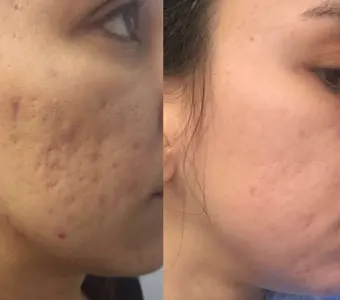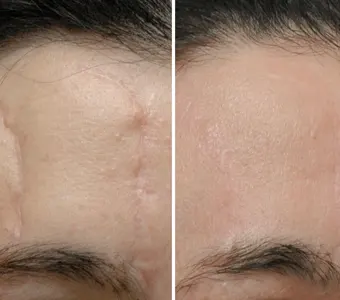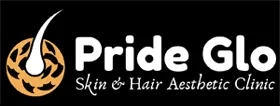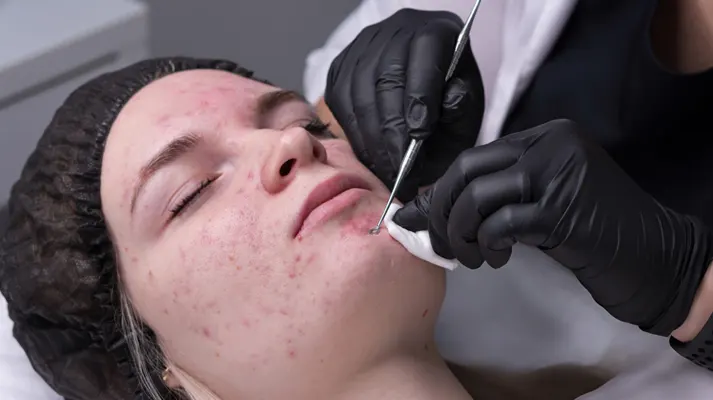Acne Scars Revision
Scar revision or correction can be approached through various methods. The effectiveness of the treatment and the selection of the appropriate technique are influenced by the specific characteristics of the scar. Key factors to consider include the patient's skin type, the severity of the scarring, the age of the scar, its origin—such as acne, surgical procedures, or chickenpox—the depth of the scar, and its classification. Additionally, it is crucial to determine if there are keloids or hypertrophic scars present on other areas of the body. An assessment of the overall health of the individual seeking scar correction is also essential, as these elements play a significant role in achieving optimal outcomes.
Acne scars are generally categorized into two main types: elevated (hypertrophic) and depressed (atrophic) scars. While atrophic scars are more prevalent, hypertrophic scars present a greater challenge in terms of treatment. Atrophic scars can be further classified into three subtypes: rolling, boxcar, and icepick scars. Various treatment options are available for addressing acne scars.
Subcision: Subcision is a technique that involves using a needle to elevate the base of a scar, freeing it from its connection to the surrounding skin. This method is particularly effective for rolling scars and achieves even greater results when paired with suction. Our experts have led the way in utilizing Vicryl threads for enhanced Subcision of acne scars, offering a more comprehensive and improved volumetric correction for these types of scars.
Dermaroller: A dermaroller is a handheld tool equipped with numerous tiny needles that create small wounds in the skin. As these wounds heal, they help to elevate and reduce the appearance of acne scars.
TCA CROSS: TCA CROSS is a well-known and straightforward method that involves applying a high concentration of TCA directly to the base of a scar to elevate it. This technique works wonders for deep scars, such as ice pick scars, and is also effective in softening the edges of scars, which can be an issue with boxcar scars.
CROSS refers to Chemical Reconstruction of Skin Scars, while TCA means Trichloroacetic acid, the chemical utilized in this treatment. Typically, the TCA concentration for this procedure is quite high, ranging from 50% to as much as 100%. The treatment is generally painless, fast, and one of the most cost-effective methods for addressing acne scars.
Dermabrasion: Dermabrasion is a procedure that utilizes a manual or motorized dermabrader to gently exfoliate the outer layers of the skin. This technique aims to enhance the skin's texture, particularly for those dealing with acne scars. It's important to consider that there will be some recovery time involved, so planning ahead is essential.
Microdermabrasion: Microdermabrasion is frequently utilized alongside other treatments or as a final step in a series aimed at revising acne scars. When used on its own, this method typically necessitates multiple sessions to achieve noticeable improvements. Additionally, for effective scar resurfacing, a more intense setting is required compared to what is used for rejuvenation purposes.
Chemabrasion: Chemabrasion is a technique that combines chemical peels with dermabrasion or microdermabrasion treatments.
Fractional Resurfacing: Fractional resurfacing utilizes LASER or radio-frequency energy to create small wounds in the skin, promoting the healing process that helps lift scars.
Acne Scars Revision


Platelet Rich Plasma: Platelet Rich Plasma (PRP) therapy represents a cutting-edge approach in the field of scar revision. This treatment can effectively serve as a standalone option for anti-aging, reducing wrinkles, and promoting hair growth on the scalp. However, its real strength shines when combined with other resurfacing techniques such as subcision, radiofrequency needling, and LASER treatments. For a single session of PRP rejuvenation targeting the cheeks and forehead, approximately 20 ml of blood is sufficient. The blood is drawn from the patient and then processed through differential centrifugation to extract the platelet-rich portion.
Effective local anesthesia significantly reduces pain, so you might experience numbness in the treated area for up to an hour after your visit to the clinic. Some swelling may occur in the treated area for up to 24 hours, but it usually doesn't disrupt your daily activities. Most patients are able to return to work on the same day as their treatment. For optimal scar reduction, a treatment session every month for about 4 to 6 months is recommended. You can expect to see initial results within a week to ten days post-procedure, with the best outcomes developing over the next 6 to 8 months. Since the rejuvenation tissue is sourced from the patient, this treatment option is generally more affordable than using fillers.
As the field of scar revision continues to grow rapidly, this technique has gained popularity quickly and shows promising results in clinical settings. Scar revision is an advancing field that has seen significant growth in recent years, allowing for impressive outcomes with the techniques mentioned above.

